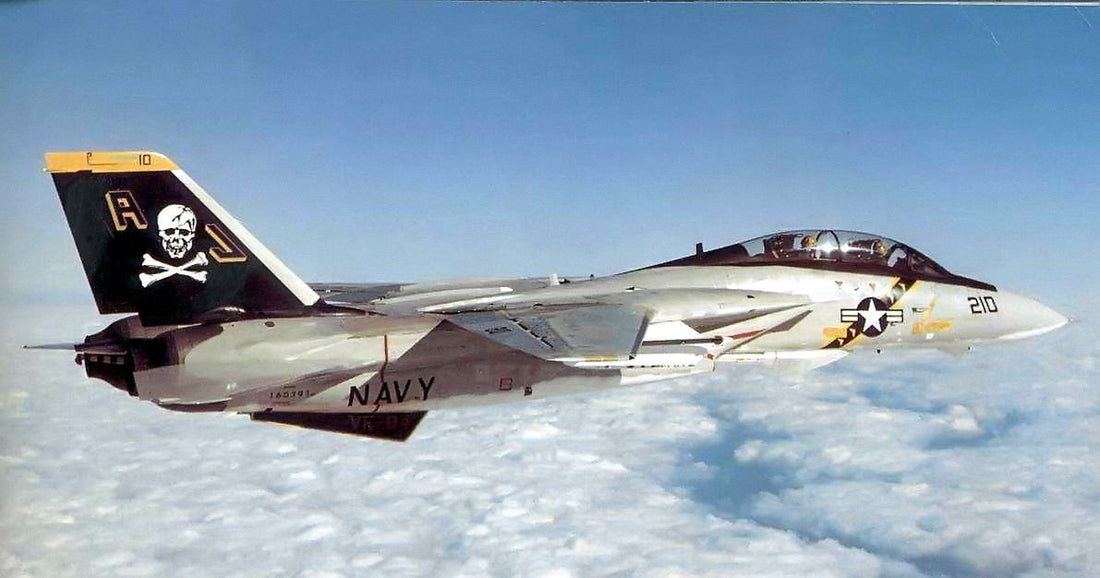United States Navy Fighter Squadron VF-84, more famously known as the "Jolly Rogers," stands as one of the most legendary units in naval aviation history. The squadron is renowned for its distinctive skull and crossbones insignia and its remarkable achievements while flying the Grumman F-14 Tomcat during the Cold War and post-Cold War eras.
The history of VF-84 traces back to July 1, 1955, when it was established as VF-84 "Vagabonds" at Naval Air Station Oceana, Virginia. Initially equipped with the F2H Banshee fighter jet, the squadron underwent several aircraft transitions in the following years, including the F3H Demon, F8U Crusader, and F-4 Phantom II. During this period, VF-84 participated in numerous significant deployments, including combat operations during the Vietnam War.
A pivotal moment in VF-84's history arrived in 1976 with the transition to the F-14A Tomcat, the most advanced carrier-based fighter of its time. The Tomcat's powerful radar system, long-range air-to-air missiles, and exceptional flight performance transformed VF-84 into a formidable force within the aircraft carrier battle group. With the arrival of the F-14, VF-84 officially adopted the "Jolly Rogers" nickname and insignia, which had previously been used by VF-17 during World War II, symbolizing courage, fearlessness, and victory.
Throughout the Cold War, VF-84 deployed numerous times to strategic locations such as the Mediterranean Sea, the Indian Ocean, and the North Atlantic, participating in countless alert patrols and military exercises, effectively safeguarding the interests of the United States and its allies. Its iconic skull and crossbones emblem frequently appeared in various media and military publications, becoming a symbol of U.S. Navy aviation.
The 1980s marked a golden era for VF-84. The squadron repeatedly earned the Battle Efficiency Award, commonly known as the "E" Award, the highest honor bestowed upon a Navy fighter squadron. This recognition signified the squadron's exceptional standards in operational readiness, safety record, and overall performance. VF-84's pilots were renowned for their superior flying skills and tactical proficiency, operating the F-14 in diverse and challenging weather and threat conditions, showcasing the Tomcat's formidable capabilities.
Following the end of the Cold War, VF-84 continued to execute missions globally. During the Gulf War, as part of Carrier Air Wing Three aboard the USS John F. Kennedy (CV-67), VF-84 actively participated in air strikes against Iraq, effectively suppressing enemy air power and ground targets.
As the F-14 gradually retired in the 21st century, VF-84 faced its own decommissioning. On October 1, 2004, VF-84 was officially disestablished at Naval Air Station Oceana, concluding its nearly half-century of distinguished service. Although VF-84 no longer exists, its legendary "Jolly Rogers" legacy and the achievements made while flying the F-14 Tomcat will forever be remembered. Many retired VF-84 pilots and ground crew members maintain close ties, often gathering to reminisce about their time soaring through the skies in the Tomcat.
VF-84 "Jolly Rogers" was more than just an exceptional fighter squadron; it was a symbol of spirit. It represented bravery, professionalism, and unwavering dedication to the nation. Its history is an integral part of the U.S. Navy's aviation heritage, and its legendary story will continue to inspire generations of naval aviators.

